Opret dit første nodeark
Vi vil starte med at oprette et nyt nodeark fra en skabelon. (Alternativt kan du lære mere om, at oprette et nodeark fra bunden i Opsætning af nodearket).
Trin i oprettelse af et nodeark fra en skabelon:
- Klik på Nyt nodeark i Nodeark vinduet
- Vælg "Opret ud fra skabelon" i dialogen Nyt nodeark, som kommer frem. Find en skabelon ved at gennemse efter Kategori , eller brug søgefeltet til at finde en skabelon direkte.
- Klik Næste for at tilføje information til nodearket (eller spring dette trin over og lad MuseScore udfylde nodearket med standard informationer, som du altid kan ændre senere)
- Klik på Færdig for at oprette dit nye nodeark.
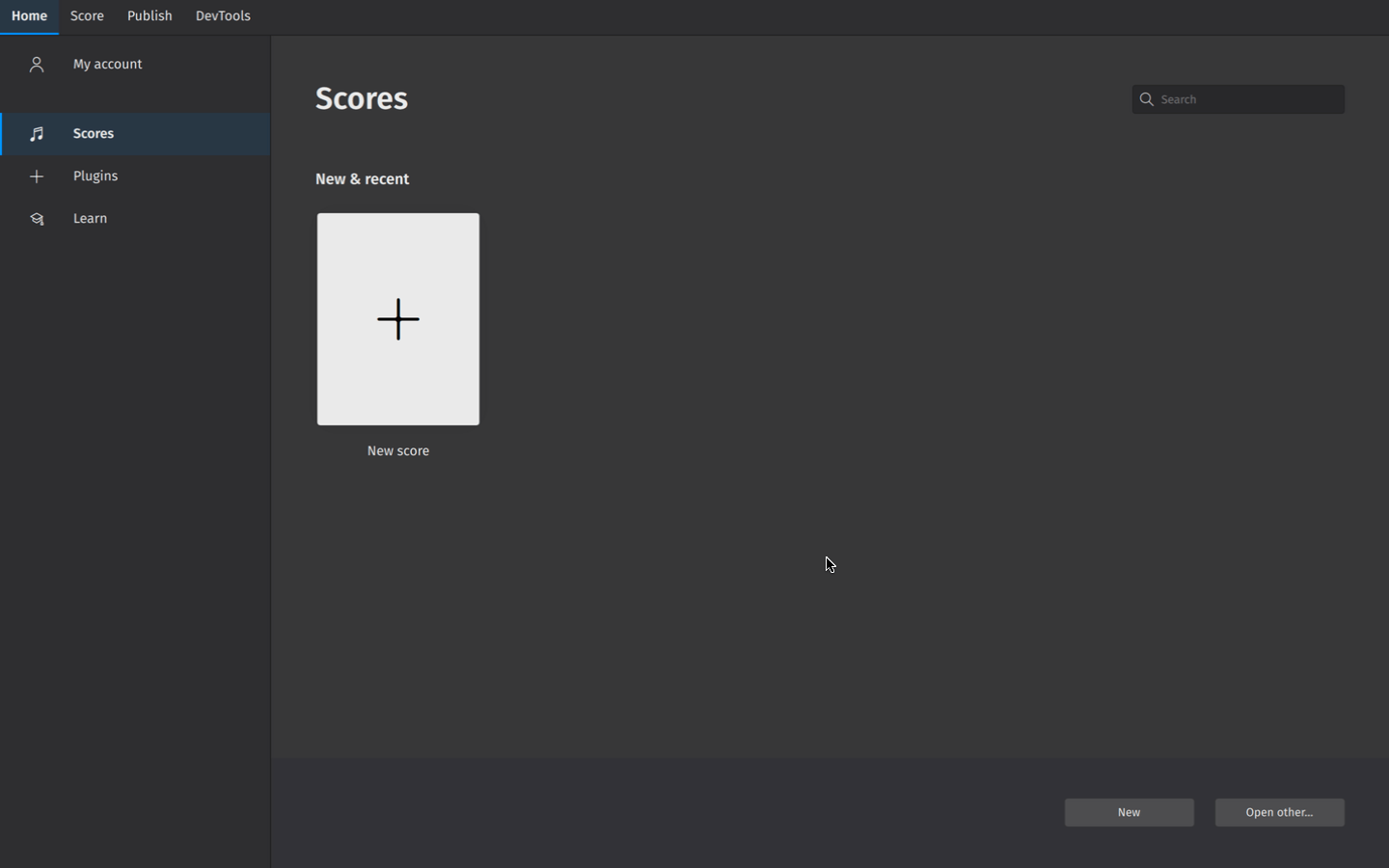
Udfyld information om nodearket
På skærmen Yderligere nodearksinformation kan man udfylde:
- Start tonearten (standarden er en toneart uden fortrgn)
- Start taktarten (standard taktarten er 4/4)
- Start tempoet. Klik først på Tempo, og marker så Vis tempomarkering i mit nodeark for at åbne feltet. (standard tempoet er 120 fjerdele).
- En optakt og dens varighed
- Antallet af takter, som nodearket oprettes med (standarden er 32, men man kan tilføje og fjerne takter i nodeark vinduet)
Indtastning af noder
Den enkleste måde, at indtaste noder i MuseScore, er at:
- Taste N på dit tastatur for at skifte til nodeindtastnings tilstand
- Begynd at taste nodenavnene (A, B, C, D, E, F, G)

Så er du igang med at lave engravering i MuseScore! (Der er ikke fundet nogen dansk oversættelse for 'engrave') Bemærk den blå fremhævning, som viser at du er i nodeindtastnings tilstand. Den viser dig hvor den næste node vil blive indsat.
Du kan sætte varigheden af hver node du indsætter via værktøjslinjen Nodeindtastning. Varigheden ændres sådan:
- Kontroller at du er i nodeindtastnings tilstand (se ovenfor)
- Klik på den ønskede varighed, eller
- Brug genvejstasterne 1 til 7 til at vælge forskellige varigheder.
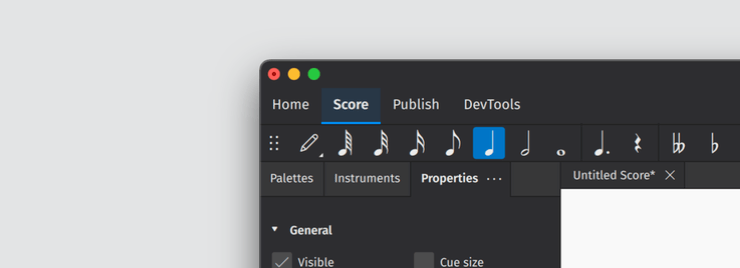
Læs mere om emnet i Indtastning af noder og pauser.
Tilføjelse af elementer fra paletter
Panelet Paletter indeholder stort set alle de notationssymboler, som der er brug for, til at tilføje detaljer til nodearket. Den nemmeste måde at tilføje elementer fra paletten er at:
- Marker et eksisterende element (eller en række af elementer) i nodearket (f.eks. et nodehoved, en nøgle, en takt osv )
- Åbn en palette i panelet Paletter ved at klikke på den trekantede pil.
- Klik en gang på det ønskede palette element
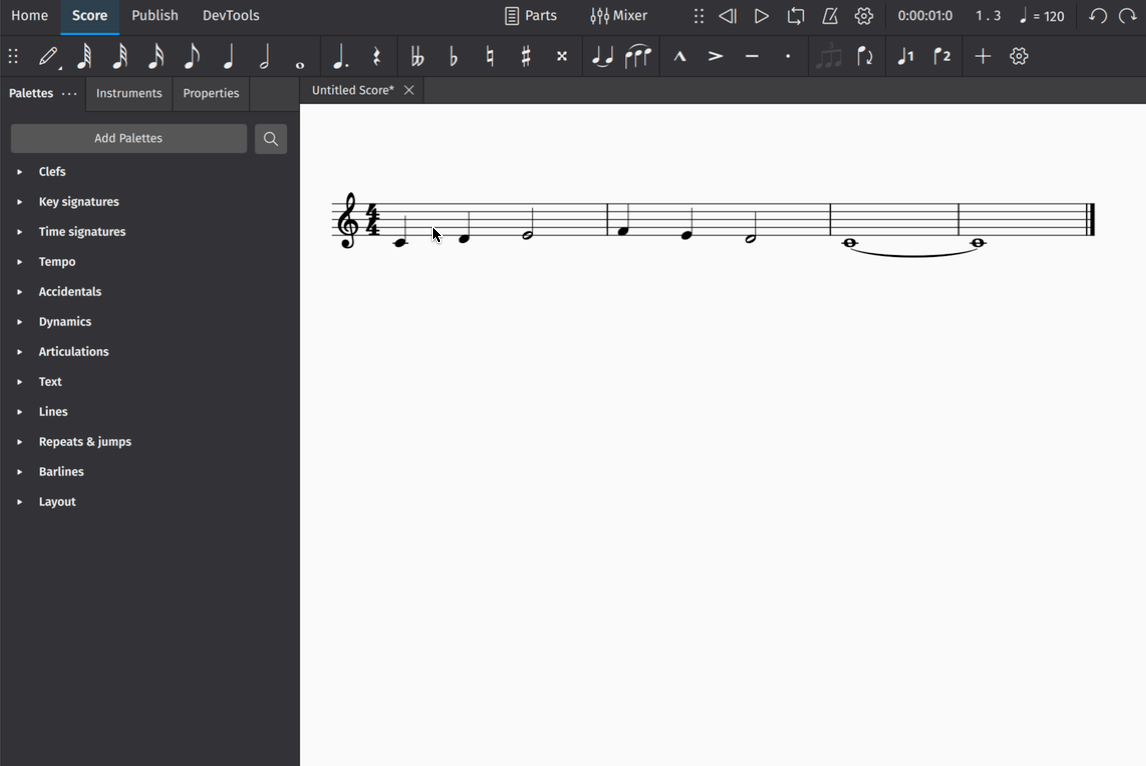
Læs mere om emnet i Brug af paletter
Brug af panelet Egenskaber
Panelet Egenskaber åbnes ved at klikke på fanen Egenskaber i venstre side af skærmen.
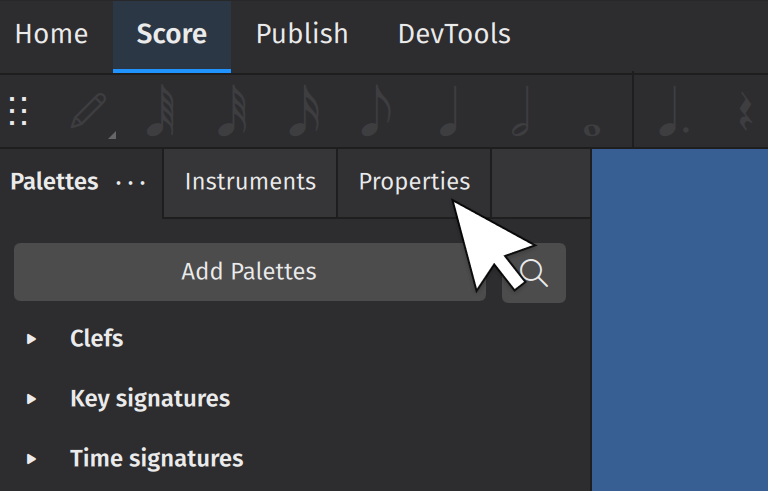
(Brugere af tidliger MuseScore versioner kender dette som Inspektør).
Panelet viser de indstillinger, som er gældende for det element , der er markeret. Indstillingerne vedrører normalt den visuelle præsentation af elementet. I de fleste tilfælde vil de ændringer, der laves i Egenskaber kun gælde for det valgte element (Dvs. at du kun ændrer den hårnål du har markeret, og ikke alle hårnåle i nodearket).
Efterhånden som du tilføjer detaljer til nodearket, kan du klikke på et vilkårligt element, for at se hvilke indstillinger, der er mulighed for.
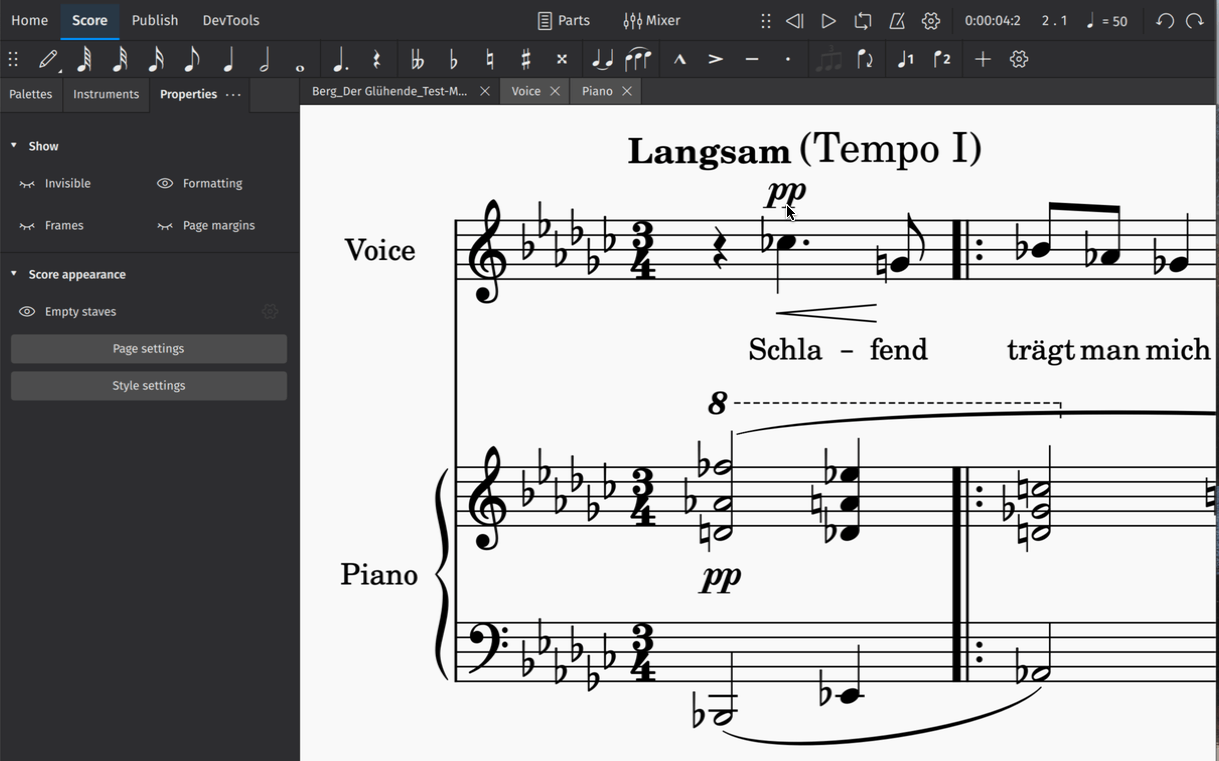
Læs mere om dette i Ændring af egenskaber.
Tilføje og fjerne takter
For at indsætte en enkelt takt:
- Klik på en takt for at markere den
- Klik på Indsæt takter i sektionen Takt af panelet Egenskaber
- Klik på knappen +
Sektionen Takt giver mulighed for at indsætte flere takter på en gang. Antallet skrives blot i tekst feltet. Du kan også bruge dropdown boksen, til at ændre på hvor de nye takter skal indsættes.
For at slette en takt beller en gruppe af takter:
- Marker den eller de takter, som skal slettes
- Klik på skraldespand ikonet i sektionen Takt.
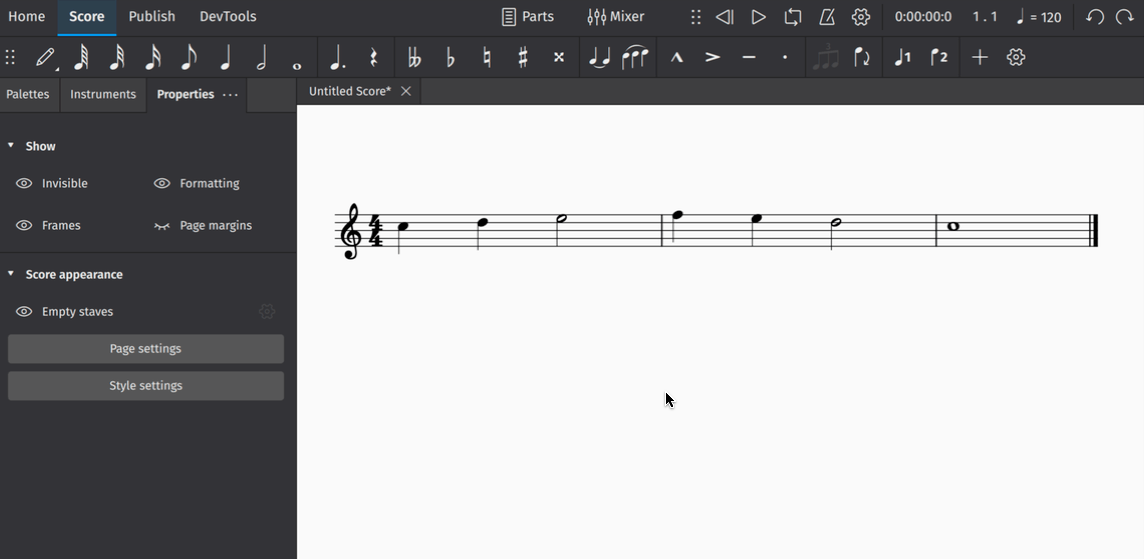
Mere om dette emne lan læses i Tilføje og fjerne takter.
Gem dit nodeark
For at gemme nodearket lokalt på din computer:
- Vælg Fil→Gem
- Vælg folder i den dialog, der kommer frem og udfyld den nødvendige information, såsom filnavn og klik Gem eller OK
For at gemme nodearket i skyen på musescore.com:
- Vælg Fil→Gem i skyen.
(Du kan blive bedt om at logge ind på musescore.com). - Udfyld navnet på dit nodeark.
- Sæt synligheden. Private betyder at kun du kan se dit nodeark. Unlisted betyder at alle med det korrekte link, kan se nodearket. Public betyder at alle kan se det.
- Tryk Gem.
Du kan finde alle dine ark i skyen ved at gå til Hjem > Nodeark> Mine online nodeark.
Læs mere om dette i Åbne og gemme nodeark .
Eksport af nodearket
Eksport giver mulighed for at gemme i andre typer af filer end MusScore, bl.a. PDF, MusicXML, MIDI, og forskellige audio og image formatet.
For at eksportere dit nodeark
- Vælg fanen Udgiv
- Klik Eksport
- Marker hvilke stemmer, der skal eksporteres
- Vælg formatet til den/de eksporterede fil(er)
- Hvis eksporten indeholder flere stemmer vælger du om hver stemme skal i en seperat fil, eller om alle stemmer skal kombineres i den en fil.
- Klik på Eksporter
Du kan også dele nodeark online på musescore.com.